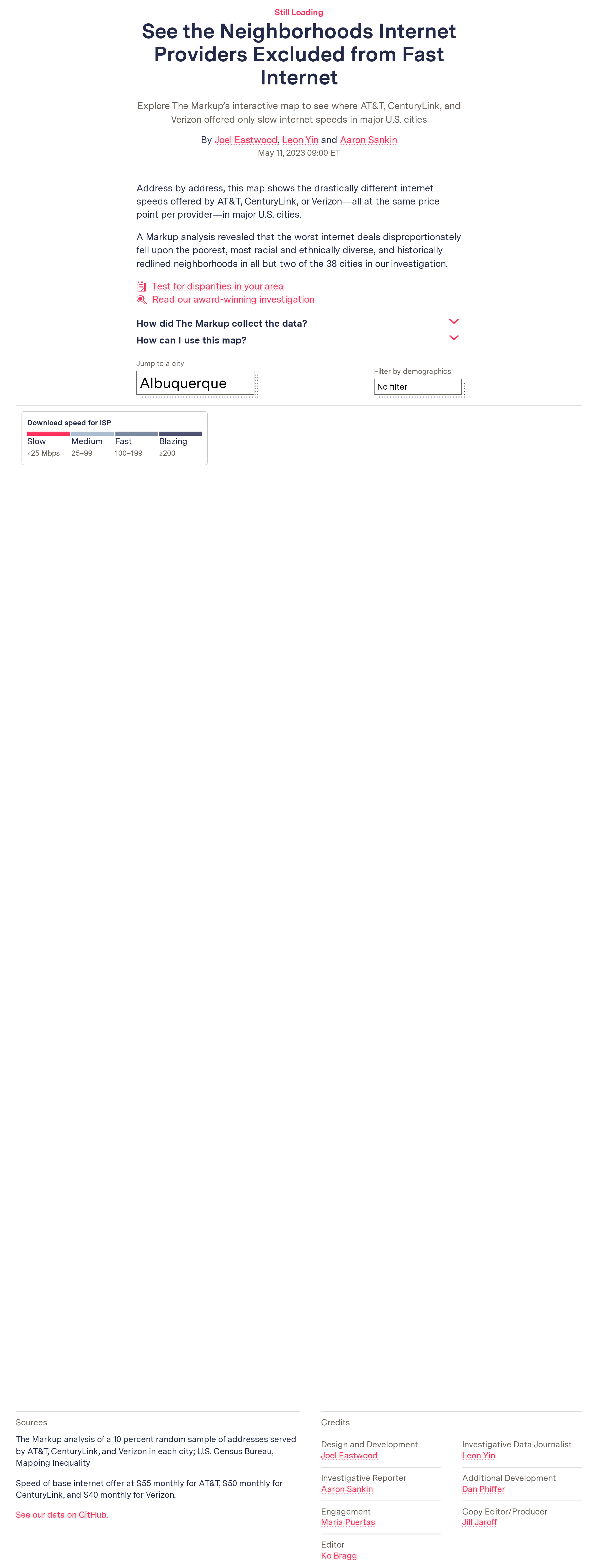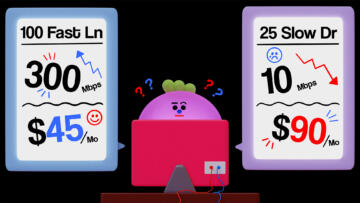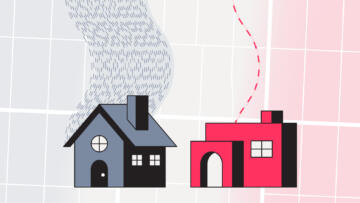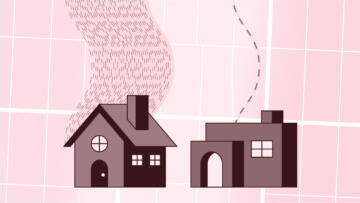See the Neighborhoods Internet Providers Excluded from Fast Internet
Explore The Markup’s interactive map to see where AT&T, CenturyLink, and Verizon offered only slow internet speeds in major U.S. cities
Address by address, this map shows the drastically different internet speeds offered by AT&T, CenturyLink, or Verizon—all at the same price point per provider—in major U.S. cities.
A Markup analysis revealed that the worst internet deals disproportionately fell upon the poorest, most racial and ethnically diverse, and historically redlined neighborhoods in all but two of the 38 cities in our investigation.
How did The Markup collect the data?
Between April and October 2022, The Markup collected more than one million internet plans from 45 major cities across the United States from four of the nation’s largest internet service providers’ websites. We investigated AT&T, CenturyLink, EarthLink, and Verizon because they each practice “tier flattening,” a pricing strategy that charges the same rate for drastically different internet speeds, depending on where you live.
Spokespeople from these ISPs denied deliberately giving worse deals to households in marginalized areas but did not reject our findings that they widely engaged in tier flattening.
We did not test all 45 cities for disparities because some cities had no variations in speeds and others were not the largest city in the state. For each city, we collected a 10 percent random sample of addresses, as shown on the map below.
How can I use this map?
Navigate through the 45 cities in our dataset by selecting a city from the dropdown or dragging the map to pan across the country. Select a dot on the map to see the details of that address, including upload and download speeds, which ISP made the internet offer, and the demographics of the neighborhood.
Addresses can be filtered by demographics, including median household income, share of White residents and, in certain cities, historical redlining grade.
This data was used by nine local news outlets to produce original reporting, and we have published a build-your-own dataset guide so that anyone can start gathering internet plans in their area, with no special skills required.
We used two open-source address datasets for geocoding, and they’re imperfect. If you spot an address you think is in the wrong place, email us at byod@themarkup.org.
<25 Mbps
25–99
100–199
≥200



